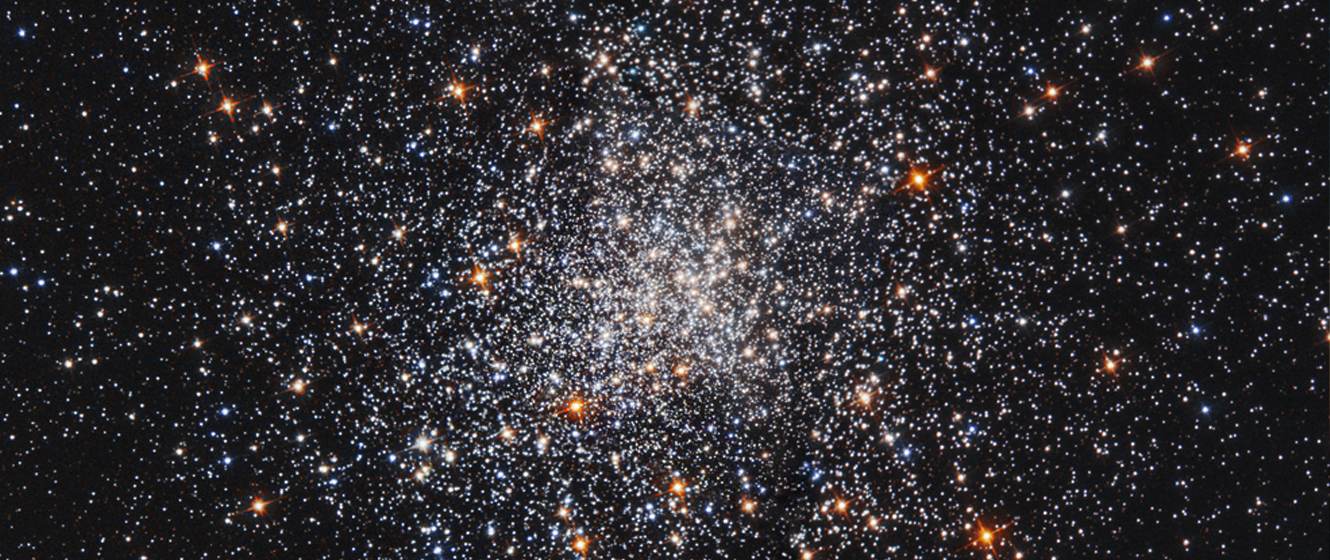
A globular cluster is a huge collection of stars grouped together in the shape of a sphere. Globular clusters can contain hundreds of thousands of stars, all tightly packed within a space roughly 60 light-years in diameter. It’s not known for sure how globulars form, but their stars are much older than regular star clusters.
Another differentiating characteristic is their location. Globulars form a spherical halo that surrounds the core of the galaxy, and as such, globulars are typically much farther away than their open cluster counterparts.
Our Milky Way galaxy has about 150 known globulars, but due to their distance, many of them appear much fainter than open clusters and can be a little difficult to observe through a small scope. However, each season has its own shining examples for you to enjoy.
Two Showcase Globulars for Spring
One of the best globular clusters visible from the northern hemisphere is Messier 3 (M3), located in the constellation Canes Venatici, the Hunting Dogs, on the border with Boötes, the Herdsman. Unfortunately, although the cluster itself is comparatively bright, it can be a little tricky to find as there are no bright stars nearby.
It’s a good idea to first use binoculars to locate the cluster. Start with orange Arcturus, the brightest star in Boötes, and then start looking between that star and Cor Caroli, the brightest star in Canes Venatici. M3 can be found a little less than halfway between the two.
The cluster is easily seen with a small telescope at the center of a triangular group of stars; you can use these stars to focus the view and make it easier to observe the cluster. At low power, it appears bright, circular, and compact with a large, slightly oval core. Increasing the magnification to around 100x can resolve the outer edges of the cluster into individual stars.
A mid-sized scope at about the same magnification can resolve most of the stars in the cluster. Meanwhile, a large scope can make it possible to see thousands of individual stars, with chains of stars curving out from the core.
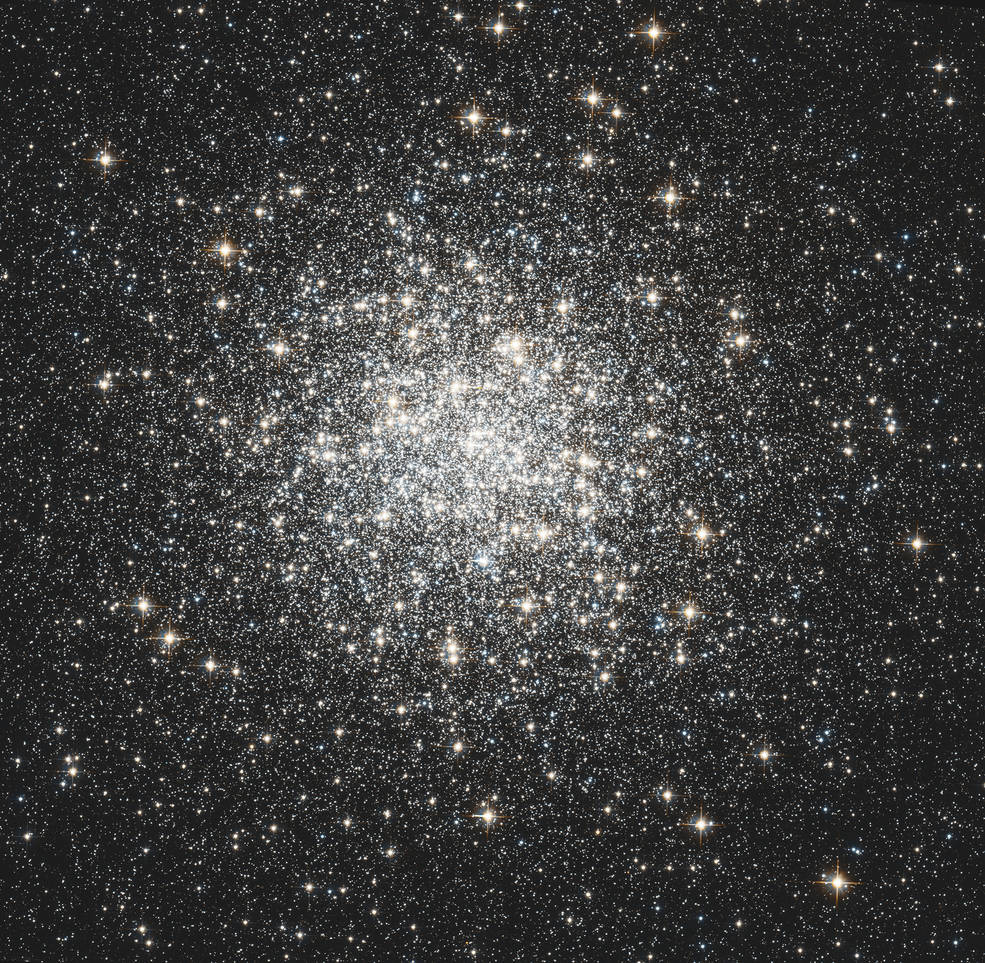
Image Credit: NASA, ESA, STScI and A. Sarajedini (University of Florida)
Spring’s second bright globular, Messier 5 (M5), is easier to find, but still a little out in the wilderness. It’s located in the constellation Serpens, the Snake. More specifically, it lies among the stars of Serpens Caput, the Serpent’s Head, nearly eight degrees to the southwest of Unukalhai (Alpha Serpentis).
That places the cluster just outside of the same field of view as the star for most binoculars but allows it to still be relatively easily found with a finderscope.
At low magnification, the cluster appears next to 5 Serpentis, with less than half a degree separating the two. A small telescope at 35x will show a different star on the western edge of the cluster but you’ll need to increase the magnification to around 100x to see any resolution. Look out for a small group of bright stars on the eastern edge and a second, fainter (but more numerous) clump on the north-eastern edge.
Mid-sized scopes at around the same magnification may start to resolve the core, with chains of stars reaching out toward the cluster’s edges. Turn a large scope toward it and the cluster becomes fully resolved, with hundreds of individual stars becoming apparent and providing a spectacular view.
With an estimated age of nearly 11 billion years and an estimated diameter of 130 light-years, M5 is one of the oldest and largest globular clusters known, and well worth seeking out.
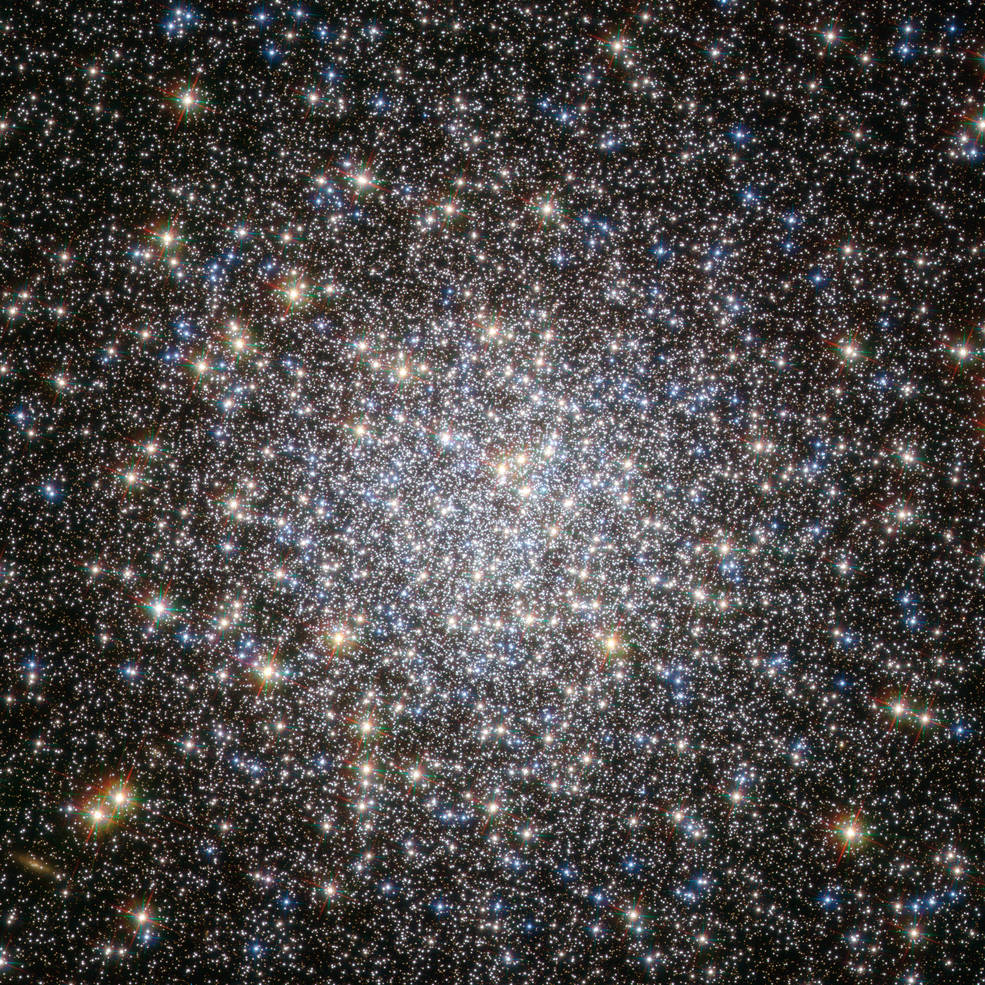
Image Credit: ESA/Hubble & NASA
Spectacular Summer Globulars
In Greek mythology, Hercules was known for his twelve laborers (some of which are actually depicted in the night sky) but to amateur astronomers, he’s probably best known for the globular cluster that can be found within the boundaries of his namesake constellation.
Messier 13 (M13), popularly known as the Great Hercules Cluster or the Keystone Cluster, is perhaps the easiest and best globular for beginners in the northern celestial hemisphere.
The Keystone is a pattern of four stars that form the torso of Hercules, and M13 is conveniently located roughly midway between Eta and Zeta Herculis. Even through a small telescope, M13 is a wonderful sight, with a low power of 35x showing a pale glow with a bright core that extends quite some way towards the edge, where it fades rapidly.
The real magic occurs at around 100x. There’s some resolution possible and the cluster looks like a splash of stars, as though someone had dropped a bucket of starry paint onto the skies above. You’ll also notice chains of stars curving out from the core, especially to the southeast, giving the cluster the appearance of a tentacled sea creature at the bottom of the ocean.
A mid-sized scope at about 150x can resolve the entire cluster, with individual stars being visible right to the very center and numerous star chains stretching out to the south and southwest. The view is stunning through a large scope, with three conspicuous dark lanes cutting through the cluster and forming a pattern resembling a propeller.
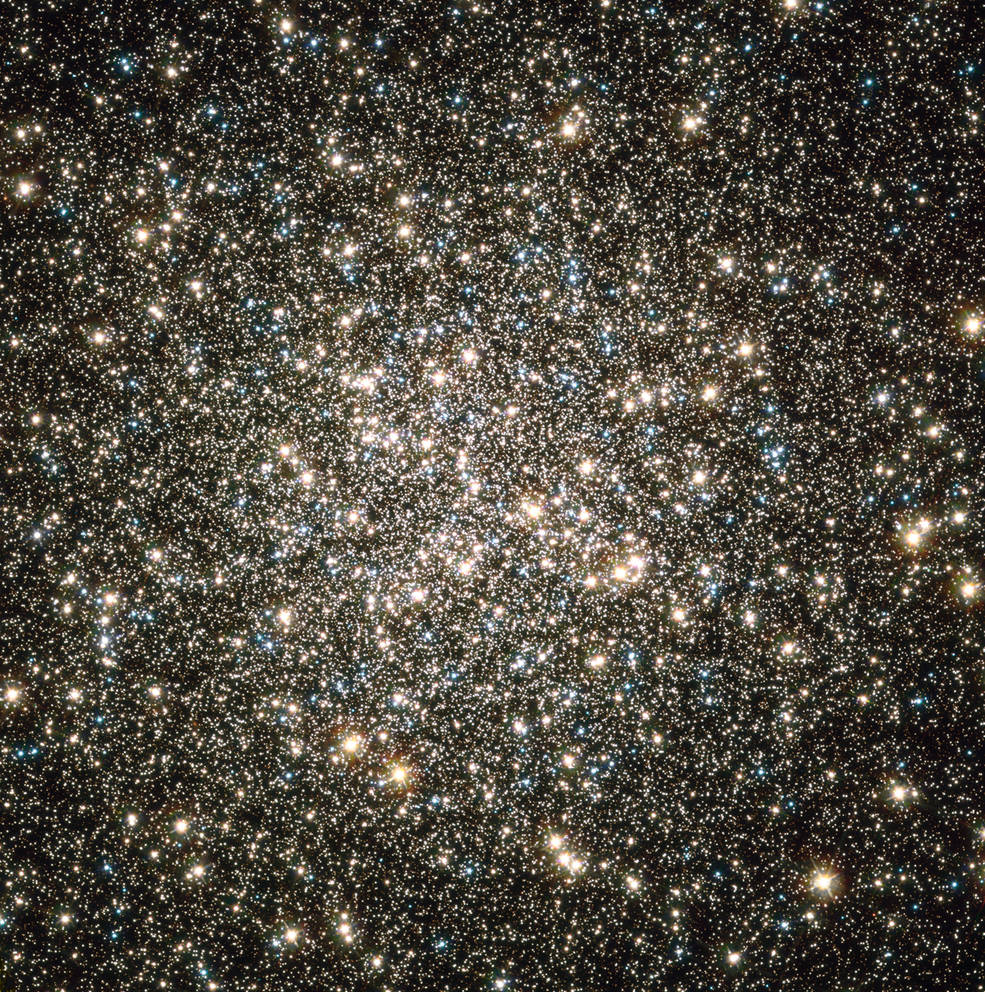
Image Credit: NASA, ESA, and the Hubble Heritage Team (STScI/AURA); Acknowledgment: C. Bailyn (Yale University), W. Lewin (Massachusetts Institute of Technology), A. Sarajedini (University of Florida), and W. van Altena (Yale University)
Messier 22 (M22), our second globular for the summer, is equally easy to find and can be equally spectacular, but it is located in the southern constellation Sagittarius, the Archer. Unfortunately, the constellation never rises very high over the horizon for observers in the mid-northern latitudes.
However, it’s still worth seeking out as it’s one of the easiest globulars to locate in the entire night sky.
The brightest stars of Sagittarius form a pattern that resembles a teapot, with the star Kaus Borealis (Lambda Sagittarii) marking the top of the teapot lid. M22 can be found just two and a half degrees to the northeast of the star and is bright enough to be visible within the same binocular field of view.
The cluster appears reasonably large, circular, and gray through a small telescope at low power. Increasing the magnification to around 50x will show some resolution along the edges, with the cluster appearing a little elongated at around 100x. There’s no obvious, bright core here, as the cluster is of a uniform brightness throughout.
M22 can be a spectacular sight through mid-sized and large scopes, with the outer edges of the cluster becoming clearly resolved in mid-sized scopes, while larger scopes will reveal clumps and chains of stars throughout the cluster.
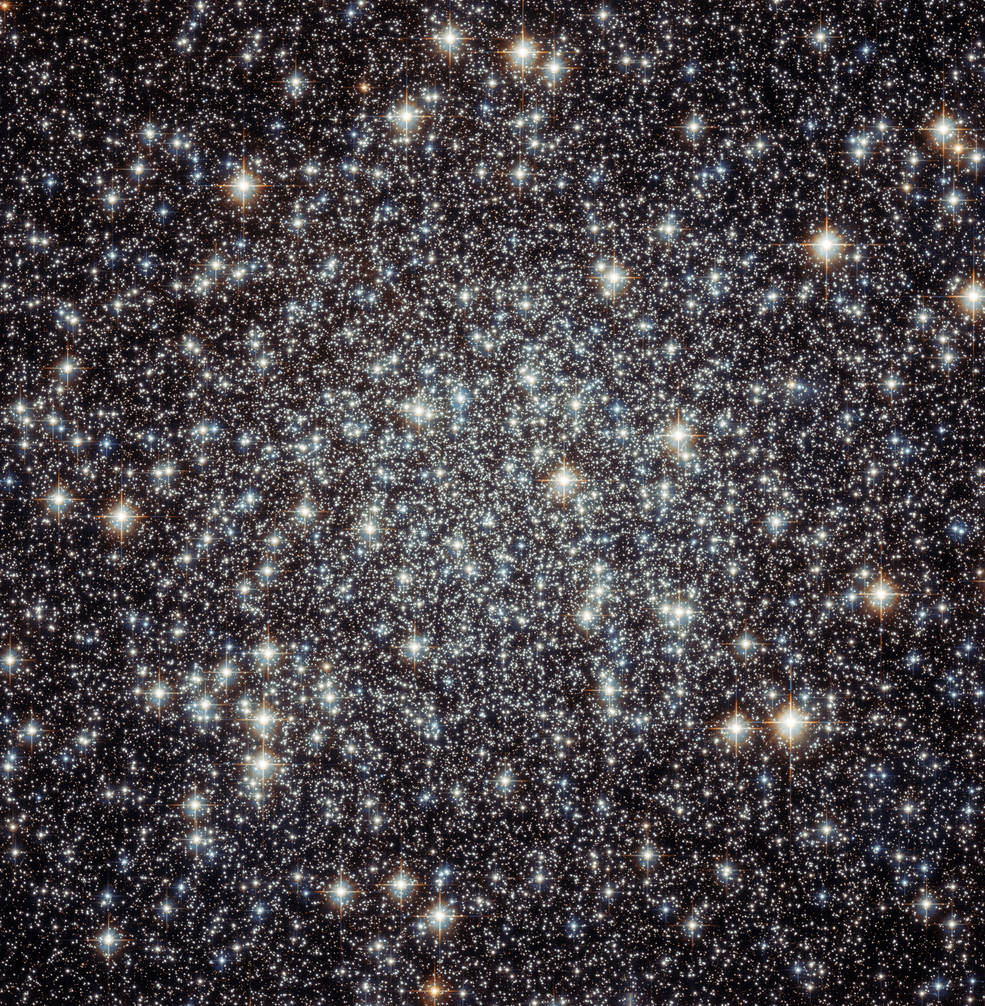
Image Credit: ESA/Hubble & NASA
Globulars Among the Faint Fall Constellations
The nights are getting longer, giving observers more time to track down previously unseen sights, and if you’ve never seen the globular cluster Messier 15 (M15), now’s a perfect time to do it. This one is easily found, as it lies just four degrees from Enif, the star that marks the nose of Pegasus, the Flying Horse.
You should be able to spot the cluster within the same field of view with most binoculars. A small telescope at low power won’t show much more than a small, hazy comet-like patch of light, next to a white star. As with other globulars, you can use this star to fine-tune your focus.
Upping the magnification to around 100x will improve the view. The cluster has a large, bright core that appears to extend about two-thirds of the way out to the edge and then quickly fades. Unfortunately, you probably won’t be able to resolve any individual stars.
A mid-sized scope at around 150x will resolve the stars that make up the outskirts of the cluster and chains of stars snaking out from the core. A larger scope is required to resolve the individual stars all the way down to the cluster’s core.
Our second fall globular cluster isn’t as easily found. There are several globulars in the constellation Aquarius, the Water Bearer, and while Messier 2 (M2) is the brightest, the stars of Aquarius itself are relatively dim.

Image Credit: NASA, ESA
M2 can be found eight degrees due west of Sadalmelik and four and three-quarter degrees north of Sadalsuud. These two stars are almost the same brightness and are the two brightest stars in the constellation. They’re also both slightly fainter and directly to the south of Enif, the star we used to find M15.
Probably the easiest way to find the cluster is to first find Enif and then look below it for Sadalsuud. You can then use binoculars or a finderscope to locate M2; with the star near the bottom of a 10x50 binocular field of view, the cluster appears near the top. It can also be found by looking about a quarter of the way between Sadalsuud and Enif.
A small telescope at low power will show a circular patch with a relatively large and bright core. Upping the magnification to around 100x may not resolve the cluster’s individual stars, but if you look carefully you may notice some texture in the form of arcs curving out from the center.
You’ll probably have more luck resolving the individual stars with a mid-sized or large telescope. For example, a mid-sized scope will show some resolution along the cluster’s edges at around 125x while a large scope and a magnification close to 200x could resolve the cluster almost completely to its compressed core.
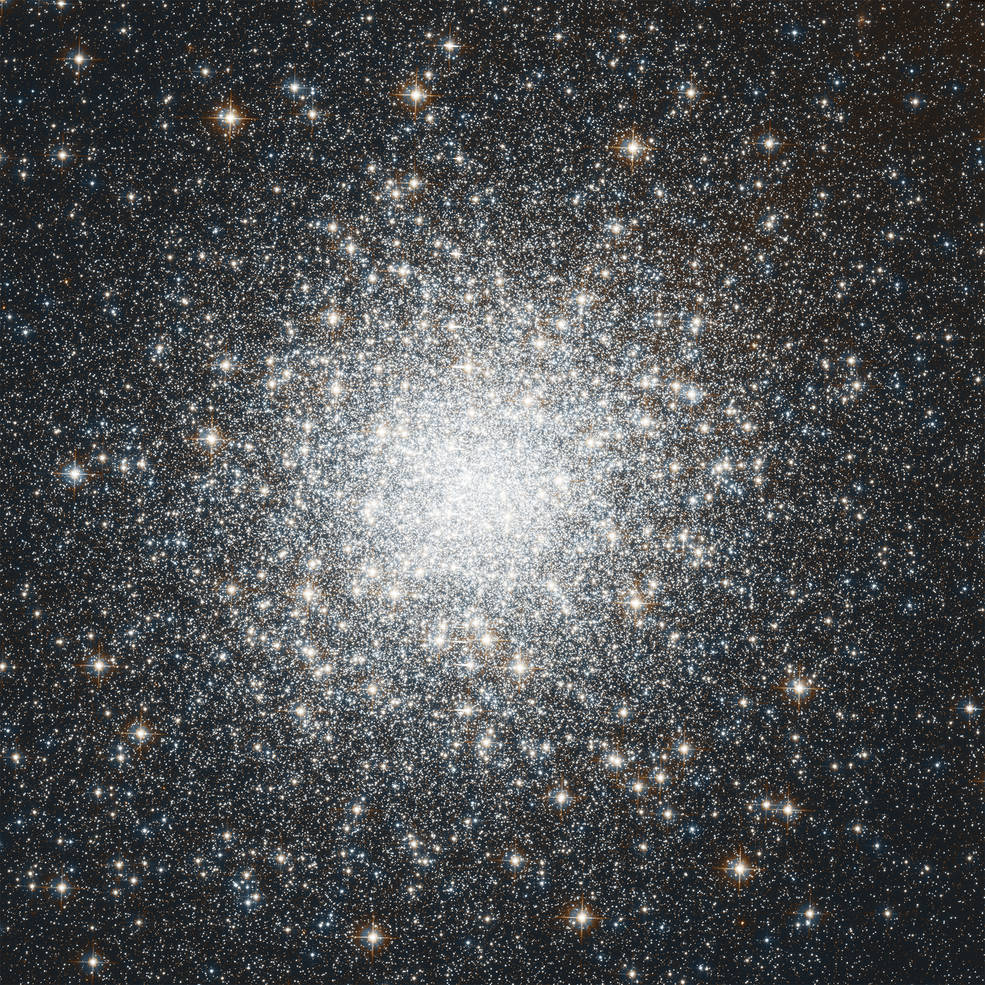
Image Credit: NASA, ESA, STScI and A. Sarajedini (University of Florida)
One Winter Globular
Unfortunately, winter isn’t the best season for spotting globular clusters as many globulars can be found while looking in the direction of the galactic center, which is best seen during the summer. However, there’s one moderately bright example that’s easily found (although it might be a little problematic under suburban skies).
Messier 79 (M79) can be found in the constellation Lepus, the Hare, which is itself conveniently located beneath the feet of Orion the Hunter. The reason this particular globular appears in the winter sky, and not near the Milky Way’s other globulars, is because it’s thought M79 is actually part of the Canis Major Dwarf Galaxy. At an estimated distance of roughly 25,000 light-years, this irregular galaxy is actually the closest to the Earth and is currently being consumed by our own galaxy.
If you want to find M79 you’ll need to first find Lepus. Look midway and about eight degrees below Rigel and Saiph and you’ll see two stars forming a short, slightly diagonal line. The star nearest Orion is Arneb, the brightest star in Lepus, while the other is Nihal, the second brightest star, and they should both appear to be roughly the same brightness.
To locate M79, you can either draw a line through both stars and continue for roughly the same distance or place Nihal in the eleven o’clock position of your finder’s field of view and M79 should appear close to the center.
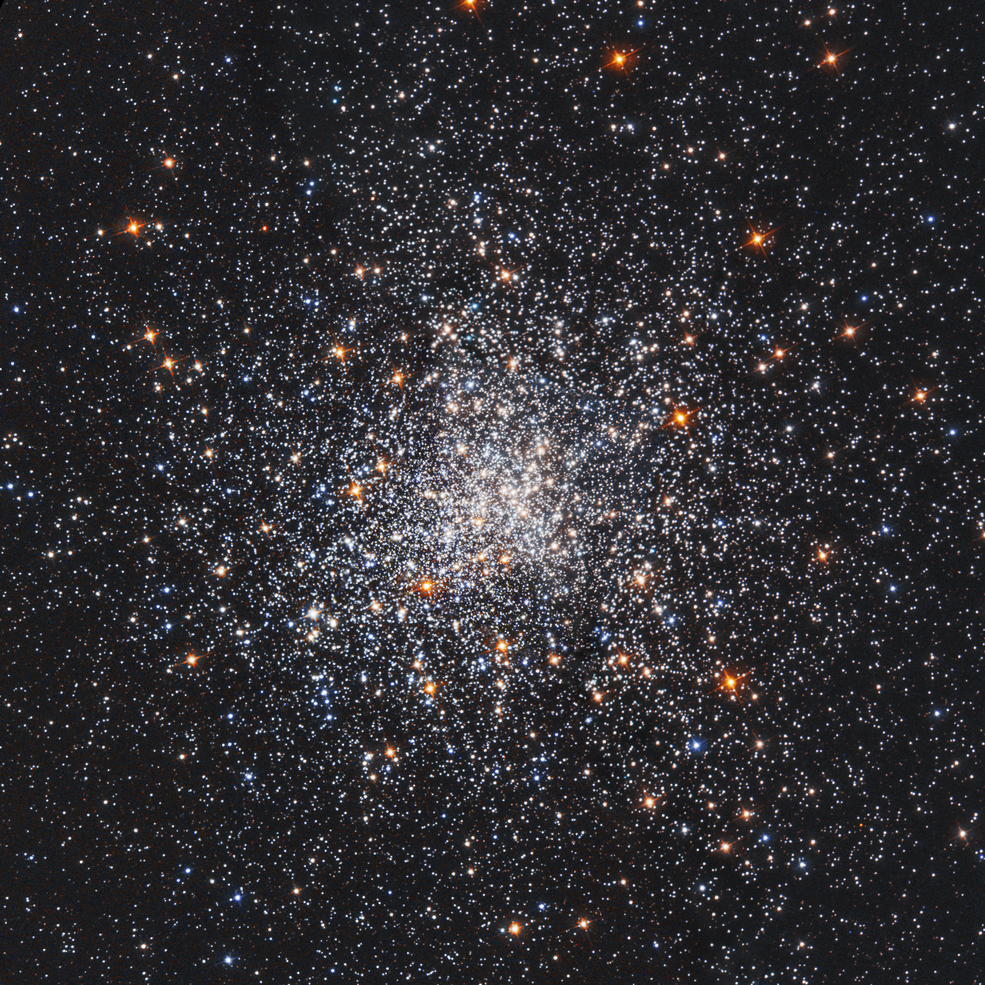
Image Credit: NASA, ESA, STScI, F. Ferraro (Universita di Bologna) and S. Djorgovski (California Institute of Technology)
A small scope at a low magnification of about 35x will show the cluster midway between two stars. It appears as a small, hazy circle with a bright center, but lacks any stellar resolution.
It’s a similar story with a mid-sized scope, with a high magnification of around 200x required to resolve any stars on the outer edge of the cluster’s halo. Large scopes at around the same magnification will resolve individual stars throughout the halo, but the highly condensed core will most likely remain unresolvable.

Learn More
Interested in learning more about what you can find in the night sky? Not sure where to begin? Check out our Astronomy Hub to learn more!
This Article was Last Updated on 07/25/2023











